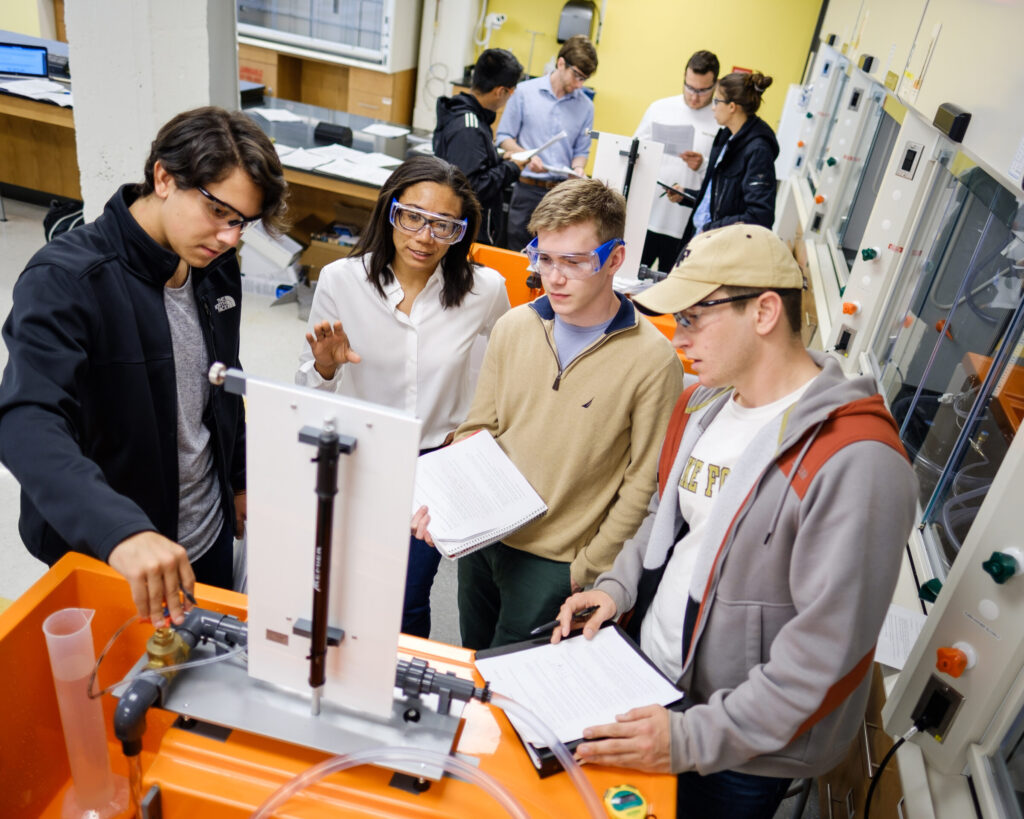Medical Physics and Engineering
Medical Physics
Affiliate physics faculty members, Daniel Bourland and Michael T. Munley carry out research in the physics of medicine at the Wake Forest Baptist Medical Center and have mentored WFU physics PhD students. There is a new (as of Fall 2021) PhD program specifically in medical physics at the Wake Forest Baptist Medical Center. For the physics PhD option, email both Professor Dezarn the Medical physics program director and Professor Salsbury, the physics program director for further information. For the medical physics PhD option, email Professor Dezarn for further information.
Medical Physics research areas include applications of multi-modality oncology imaging in radiation treatment, physical and biophysical modeling, radiation treatment optimization, small-field dose calculations, Monte Carlo modelling of gamma radiosurgery, scatter analysis of cone-beam CT for image-guided radiation treatment, biological effects of low-dose CT imaging, and biophysical aspects of radiation countermeasures. Flexibility is allowed for experimental and theoretical dissertation topics based on student interests and designated research funding, decided in discussion with the student’s advisor and dissertation committee.
Engineering
Lauren Lowman’s research group , as an affiliate faculty member in physics, investigates how climate and weather disturbances affect overall ecosystem health, productivity, and sustainability using numerical models, geospatial data analysis, and field experiments. Our group’s interdisciplinary research into ecosystem health and productivity intersects the fields of engineering, physics, hydrology, biology, and ecology, among others, and has impacts that are societally relevant. Our group is currently focused on investigating:
- How wildfire dynamics affect vegetation regrowth and carbon cycling;
- Ecosystem vulnerability to short-term and long-term drought events; and,
- How climate change alters the self-sustainability of temperate and tropical forests.
These projects combine taking measurements in tropical forests and at wildfire sites with field sensors, building numerical and statistical models to represent these ecosystems and forecast future states, and working with satellite remote sensing data.

Erin Henslee’s research group as an affiliate faculty member in physics, investigates cellular electrical properties and how they relate to other biophysical cellular phenomena. The goal of our research is to understand the interplay between cellular electrophysiology and cellular function and to use electrophysiology as a tool in disease diagnosis, progression monitoring, and treatment targeting. This work bridges biosciences, bioengineering, and biophysics towards novel cellular analysis techniques, lab-on-a-chip device design, and point-of-care applications.

Our group is currently focused on investigating:
- Red blood cell (RBC) electrophysiology as a marker of RBC pathology;
- The interconnection between various electrophysiologic parameters including membrane potential, zeta-potential, and membrane conductance/capacitance; and,
- Cell separation and patterning based on electrophysiologic response.
These projects combine experimental methods in a biosafety level 2 lab (BSL2) facility,
conducting numerical and statistical analysis to elucidate cell parameters, as well as
designing, modeling, and fabricating lab-on-a-chip devices.
